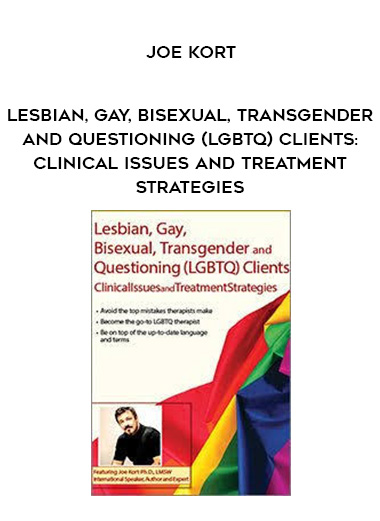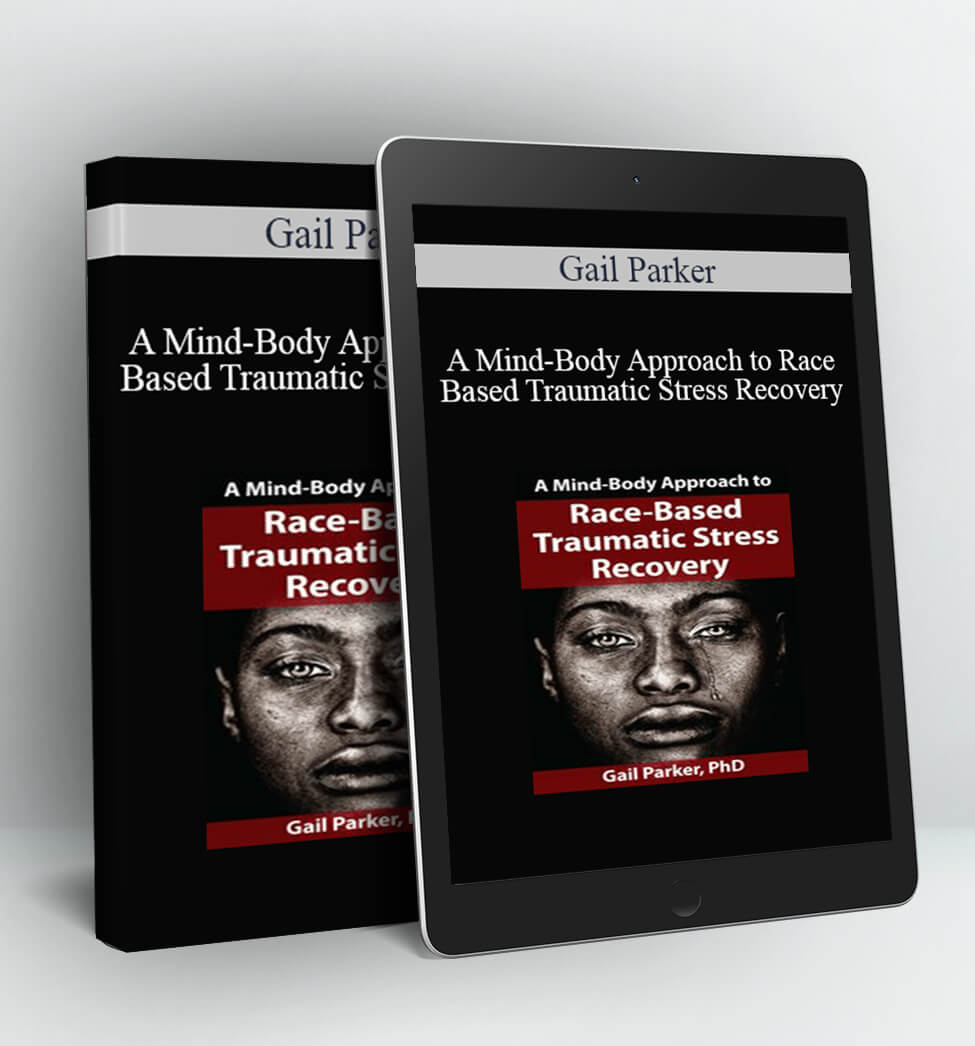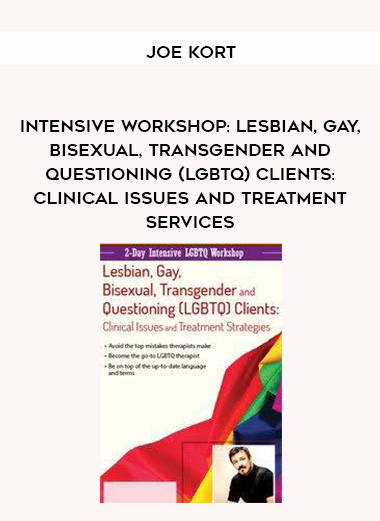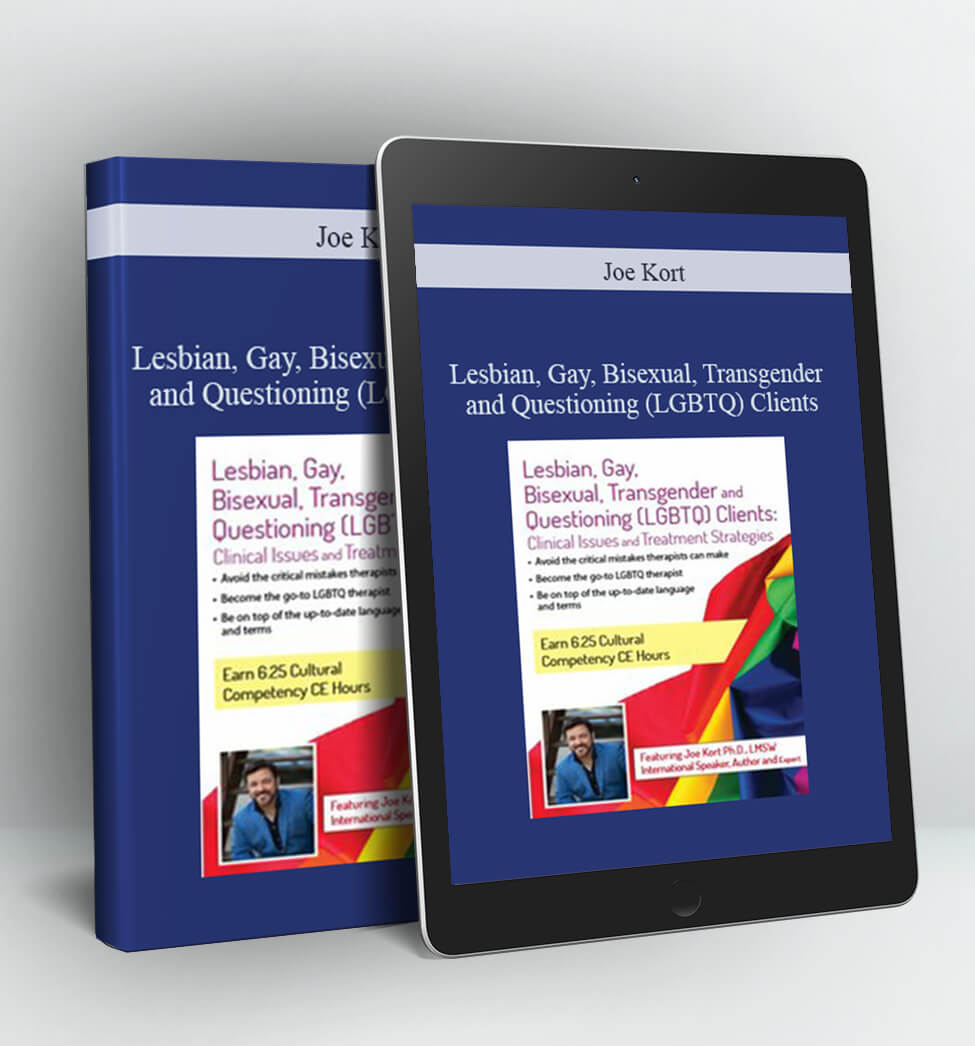LESBIAN, GAY, BISEXUAL, TRANSGENDER AND QUESTIONING (LGBTQ) CLIENTS: CLINICAL ISSUES AND TREATMENT STRATEGIES – JOE KORT
Are you making the biggest mistake treating your LGBTQ clients? Are you pushing them to “come out”? And if you are…you could be traumatizing your clients.
I made the same mistake early in my career of forcing my clients to name and claim their sexual identity.
I didn’t know how to ask them about their sexual practices. And when I tried, I offended them.
Watch my workshop and I will equip you with the right tools and up-to-date information you need in this rapidly changing population to more effectively counsel your lesbian, gay, bisexual, transgender and questioning clients, and couples.
You will learn specific strategies to better treat the unique challenges your client may be facing such as:
- self-acceptance and internalized homophobia
- non hetero-normative sexual behaviors and practices
- trauma and abuse from growing up LGBTQ
- the difficult process of coming out
Also, let me help you avoid the common mistake of believing, “a couple is a couple” and treating LGBTQ couples the same as their heterosexual counterparts.
- Assess gay, lesbian, bisexual, transgender and questioning clients for psychological trauma to assist in informing treatments interventions.
- Establish and understand the six distinct stages of the coming out process to provide optimal amount of support to the client.
- Distinguish between mental health disorders that mimic the effects of the trauma from growing up LGBTQ.
- Utilize specific clinical interventions and assessment tools to more effectively treat LGBTQ clients.
- Employ adaptable clinical interventions to work more effectively with LGBTQ clients from different generations.
- Consider the dynamics of same gendered couple, including vulnerabilities and strengths, when working with LGB couples in session.
GET LESBIAN, GAY, BISEXUAL, TRANSGENDER AND QUESTIONING (LGBTQ) CLIENTS: CLINICAL ISSUES AND TREATMENT STRATEGIES OF AUTHOR JOE KORT
Do No Harm: Make Your LGBTQ Client Feel Safe & Respected in Therapy
- Red-flag words: Offensive words you might use (without you knowing!)
- Intake session: questions about developing identity
- Strategies to establish rapport and comfort
- Tips for discussing sex and sexuality
Talk About Sex!
- Don’t miss out on key info by ignoring the sex talk
- Top or bottom? And other important questions to ask: flexible, changing sexual preferences and attractions
- Varieties of sexuality
- Protect the client from your own biases and assumptions
Coming Out
- Stigma and its impact on mental health from childhood to adulthood
- 6 distinct stages with interventions
- Navigate the 3 phases of coming out to avoid isolation and alienation
- Fear, shame and rejection unique to this population
- Relationship concerns: family, friends, school or workplace
- Finding a sense of belonging in LGBTQ community
- Harmful and dangerous effects of conversion therapy
LGBTQ Adolescence
- Coming out issues
- It gets better but not before coming out
- Bullying and other safety issues contributing to PTSD
- Harm reduction adult dating apps such as Grindr, Scruff, etc.
- Risk assessment for substance abuse
- Assess for suicidality
- Finding support
Gay Male
- Develop a treatment plan and goals for unique challenges growing up gay male
- Accurate assessment of alcohol use with this high risk population
- HIV & STI prevention strategies and risk and harm reduction
- Generational differences informing different treatment plans
- Internalized homophobia
- Learn specific sexual terminology to avoid alienating your client
Lesbian
- Develop a treatment plan and goals for unique challenges growing up lesbian
- Specific terminology that is helpful and damaging in this population
- Sex and sexuality: what to know, what to ask
- Strategies to manage gender dynamics
- Internalized homophobia manifests in development
Bisexuality
- Learn strategies to help the anxiety of bisexuals in dating and relationships
- Internalized biphobia and bisexual development from childhood into adulthood
- Compare and contrast male and female bisexuality
Transgender
- Overcome the knowledge barrier
- Avoid using outdated treatment plans
- Learn and differentiate correct terms such as gender queer, gender fluid and cisgender
- Strategies to help your client tell their partner, families, friends and employers
- Tips to discuss hormone treatments and surgical procedures
- Crucial points for transgender teens medically and psychologically and how to create best treatment plan
Questioning
- Avoid mislabeling a client and leading them down the wrong sexual identity path
- Differentiate between sexual fluidity from bisexuality, gay and lesbian identities
- Differentiate between sexual identity, sexual behavior and sexual fantasies
Working with LGB Couples
- Dynamics of a same gendered couple including vulnerabilities and strengths
- Coming out discrepancy causing turbulence for couples
- Recognize and identify how internalized homophobia creates conflicts
- Open relationships in gay male couples
- Sexual issues and strategies on compatibility, incompatibility, frequency and satisfaction
Working with Mixed Orientation Couples and Relationships
- Specific stages of coming out as a mixed orientation couple
- Specialized treatment programs for the straight spouses
- Helping LGBTQ spouse integrate their identity into their mixed orientation relationships
- Learn how to identify which couples will succeed and which won’t






